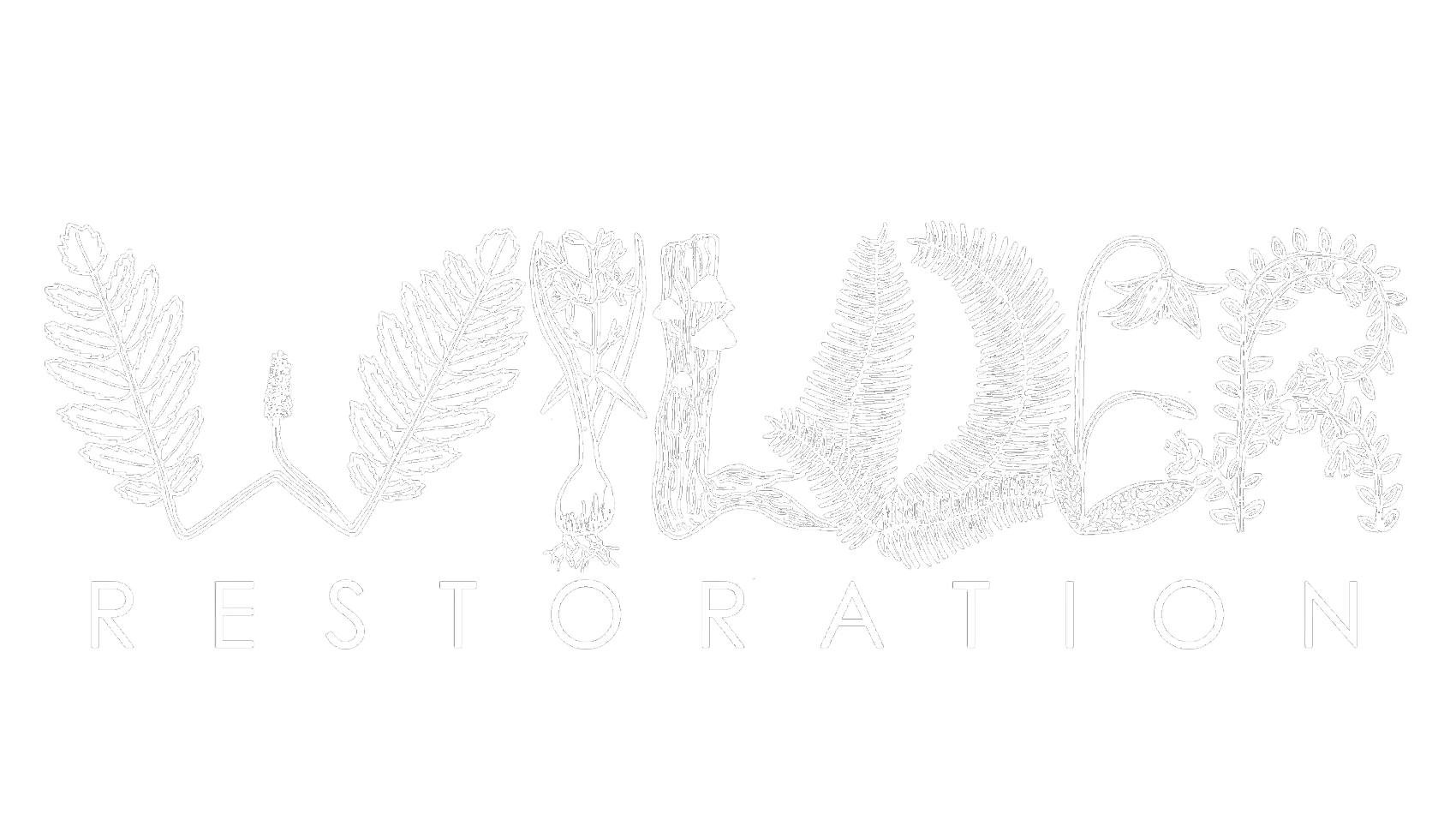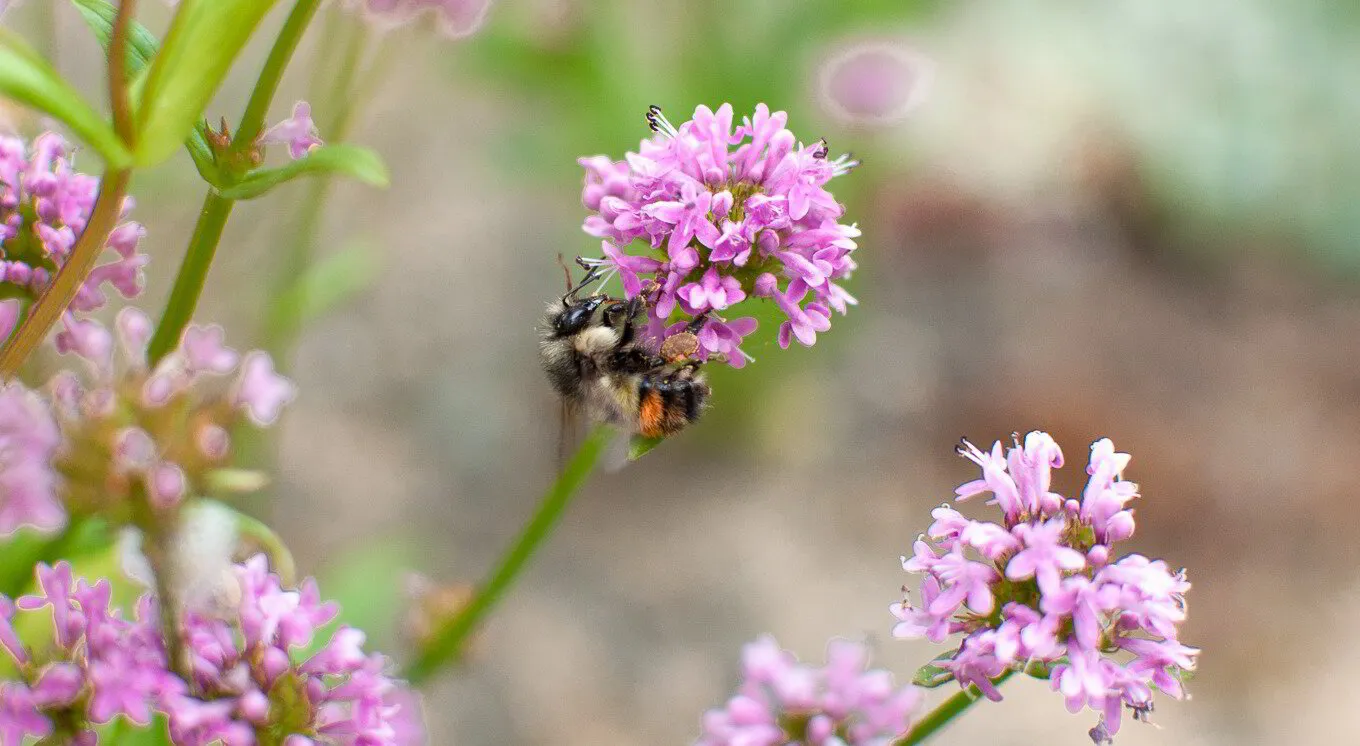There’s more to pollinators than just honeybees, and while the honeybee is the species we tend to think of first when we hear the word “pollinator”, they aren’t actually a native species in Canada. Honeybees do a lot of great work, however there are many native, wild pollinators in British Columbia that deserve a spotlight. Four groups of native pollinators have been highlighted here, but there are always more native pollinators to be talked about! Check out your garden or local park and see if you can spot any of the four groups listed below, and even find some new pollinators out there.
Bumblebees (Bombus spp.) are some of the most common native bees we see, and though each species can have a variety of colours and patterns, they are easily identified by their fuzzy, round bodies and deep buzzing sound. They are some of the earliest pollinators to come out in the spring, and are often out in cooler, cloudier weather than other bees. Colonies nest underground, in old burrows, and old vegetation or rock piles during the late spring and summer seasons. They use a particular method of pollination called buzz pollination, also referred to as sonication. This type of pollination involves the bees grabbing onto the flower and rapidly moving their flight muscles to shake the flower enough that it releases extra pollen. Many plants rely on this form of pollination, notably blueberries, of which bumblebees are a native pollinator. Their fuzzy bodies also make them great pollinators because the hairs catch more pollen than other bees. Because of their long seasons, weather tolerance, and effective pollination methods, bumblebees are some of the most important pollinators that we have, and no doubt some of the cutest.
Mason Bees (Osmia spp.) are solitary bees which nest in pre-existing holes, such as a bee house, hollowed out blackberry canes, hollow reeds, and old insect holes. They collect mud and clay to line their nests and this habit is actually what got them their name. Mason bees are important early season pollinators and are often done with their season by mid June. While they are pollinating, they collect pollen on their bellies, rather than their hind legs like honeybees, as they often pollinate more open-faced flowers. They are a part of the "Hairy Belly Bees" from the family Megachilidae, and these hairy bellies are what allow them to keep pollen on their bellies when travelling between flowers. In the relatively short time they are out, they are very efficient pollinators, especially for fruit trees.
Leafcutter Bees (Megachile spp.) are closely related to mason bees and share many similarities. They are solitary, non-aggressive bees, who live in pre-existing holes, and carry pollen on their bellies rather than their hind legs. This also puts them in the "Hairy Belly Bees" family, Megachilidae. Instead of collecting clay though, they cut bits of leaves to use in their nests. This activity is how they got their name, and you can often spot leaves that have been harvested by a leafcutter bee from the clear circular holes cut into the edges. To accomplish all this chopping, they have particularly large mouth parts that set them apart from most other native bee species. These bees in particular are especially widespread, and in North America we have both native and introduced species of leafcutter bees.
Hoverflies (Syrphidae family) mimic bees in their appearance, though they are a fly. They are a widespread family of pollinators and can be found in most biomes around the world. They are often confused with a bee or a wasp but can be identified by their large eyes resembling ski goggles, that take up most of their head, and their stubby antennae. Since they are flies they also only have two wings, rather than the four that bees have. These two wings are accompanied by halteres, shortened hindwings that are not for flight but do aid in balance for the fly. These help to give flies their quick, efficient flight style, and hoverflies especially are known for looking like they are hovering in the air when they are flying. As you could guess, this flight pattern is what got them their name. It is also another way to distinguish them from bees, as bees do not often fly with those kinds of precise movements. Hoverflies pollinate a large array of flowers, particularly open faced flowers, and are sometimes referred to as “flower flies”.
These pollinator groups are just a small sample of the many native pollinators that we have in B.C. There are over 400 species of bees alone in B.C., when counting all the butterflies, hummingbirds, beetles, flies, and wasps, there are so many native pollinators that are maintaining their ecosystems every day. Many go unnoticed as they fly between flowers, but if we look closely often we can spot new pollinators that we never knew of before. There are many simple ways to show support for all these pollinators and even encourage them to share your yard, balcony, or boulevard.
Pollinator Friendly Gardening
There are many ways that we can encourage and maintain healthy pollinator populations in our areas. An important first step to supporting pollinators is by having native plants in our gardens, balconies, boulevards, parks, and other green spaces. By planting an array of native species, with staggered flowering periods, we can ensure that native pollinators have the species they are adapted to and will have access to food all season long. Having flowers and therefore food available all throughout the season, especially for the early season pollinators, is one of the biggest ways we can help native pollinators. Once these native plants are in the ground, or in a pot or growing box, they are low maintenance and they will do all the work to attract and care for pollinators.
Bee fountains are a great way to provide water to pollinators, not just bees, and they are easy to do yourself. All you need is a shallow dish, fill that with small rocks, and pour fresh water in it so that the rocks are almost covered. Place this anywhere in your yard, particularly near any flowering plants. This will let insects access water without falling in, and safe sources of water are very important to pollinator populations. Make sure to replenish it, especially on hot days, and empty it out if it gets overfilled on a rainy day.
Finally, providing homes and habitat for bees to nest in benefits both the pollinators and your garden. This can be as simple as not raking up your leaves in the fall and letting them stay on the ground, at least until late spring if you do need to rake them up. All that leaf litter is great for native pollinators to use as overwintering habitat. Then in the spring when it gets warm they will emerge again and get right back to pollinating. In that same vein, leaving more woody debris around your yard is great for both overwintering habitat and summer nesting sites. Native pollinators love a messy lawn, the more organic debris around the better! You can also buy or make your own bee condos, these target more of the solitary bee species that make small holes their home like the Mason bees and Leafcutter bees. These are just some of the many ways you can make your space more hospitable to native pollinators!

